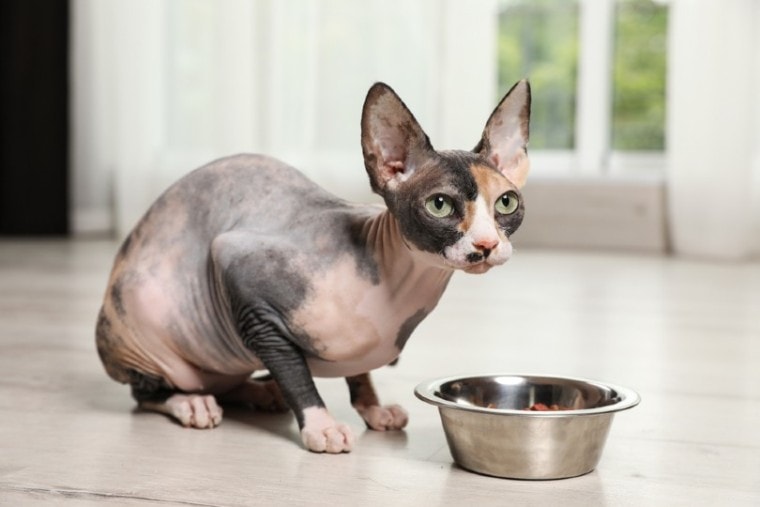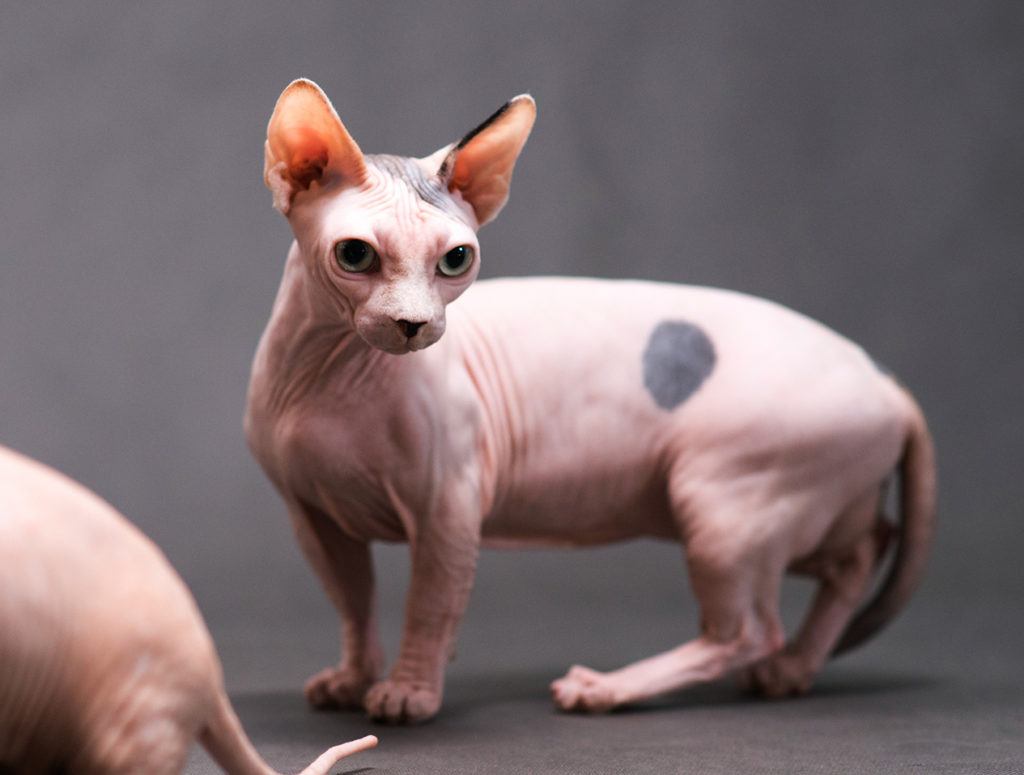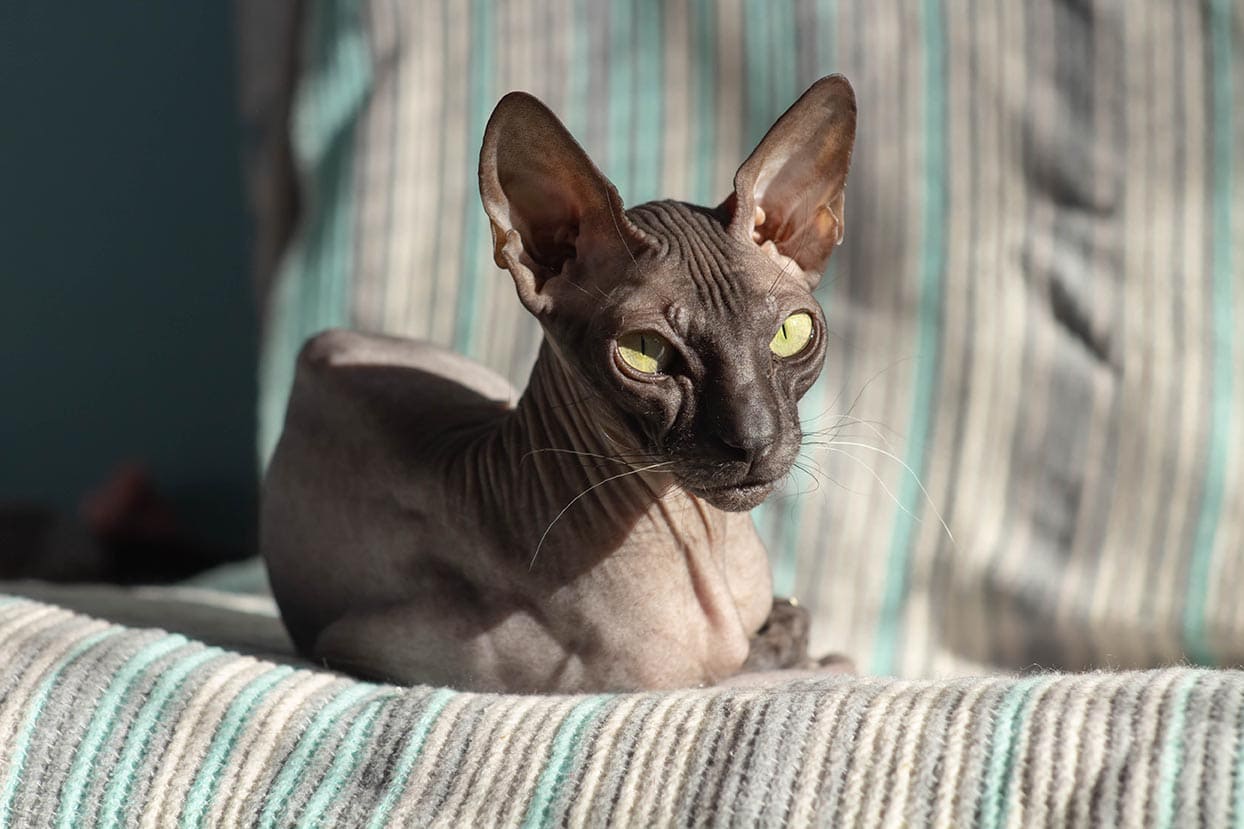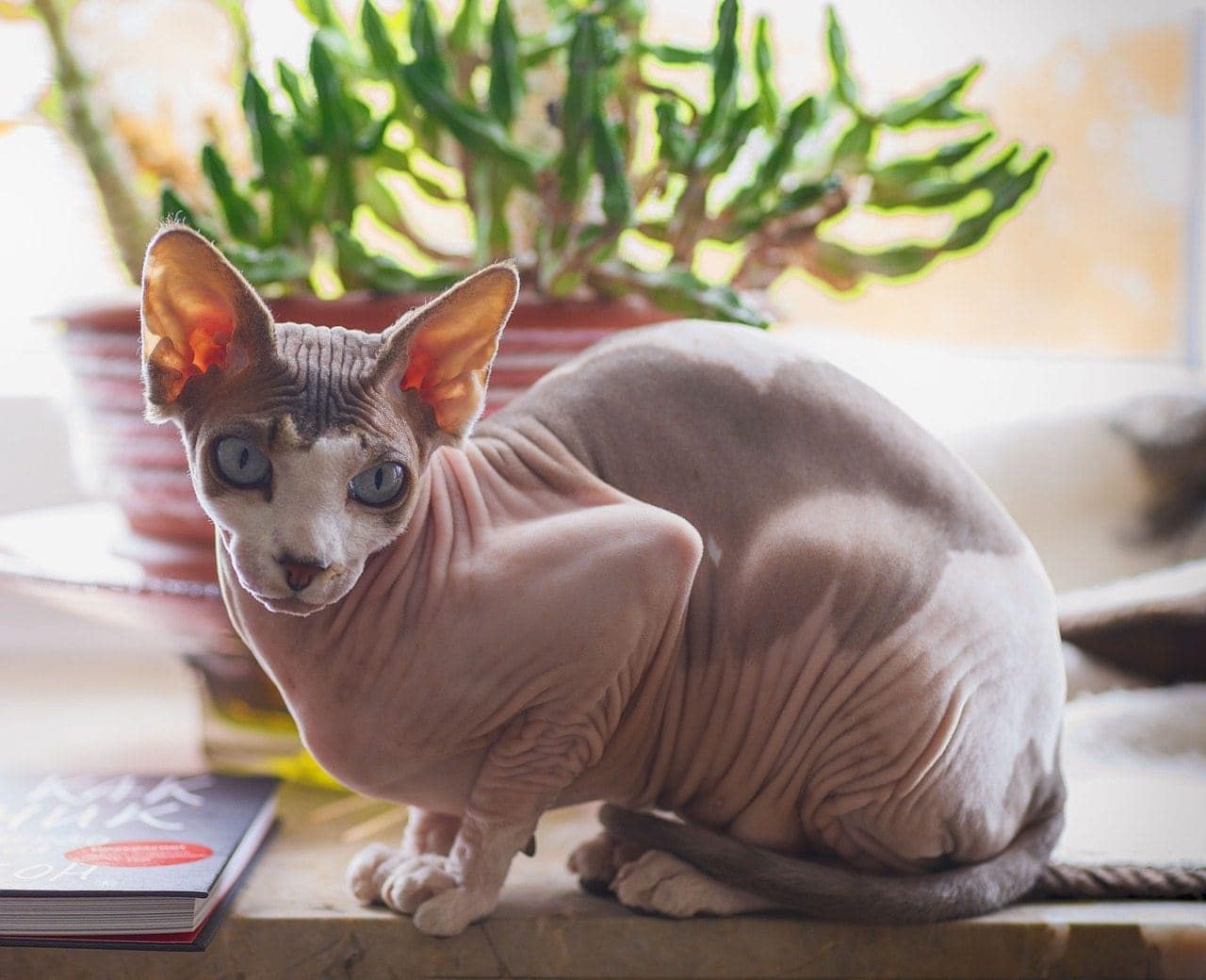
A good number of people in the world are allergic to cats and dogs, with more having cat allergies. If you’re one of these people and want a cat, you may be wondering if hairless cats are hypoallergenic. The bad news is that hairless cats are not totally hypoallergenic. However, these felines cause less of an allergic reaction than their furry counterparts.
If you have a mild allergy to cats, a cat without hair is more hypoallergenic than a hairy feline, which may be good enough for you. Just keep in mind that a cat without hair is not 100% hypoallergenic, and we’ll tell you why!
Why Hairless Cats Can Trigger Allergies

You may be surprised to learn that it’s not cat hair that causes people to have allergic reactions. The primary allergen in felines is a specific type of protein called Fel d 1. This protein is present in the sebaceous glands of the skin and the cat’s saliva.
When a cat with hair grooms themselves, they move their saliva and skin oils throughout their hair, covering it with this allergen. Then, the individual strands of hair fall off the cat and end up on your clothing, furniture, carpeting, and more. Also, microscopic bits of skin, known as dander, are periodically shed by cats. Dander can remain airborne for long periods of time and can easily attach to clothes or other surfaces. It can also be carried around by the wind or a draft. When you or someone who is allergic to cats breathe in the air, the Fel d 1 allergen is inhaled, causing an allergic reaction.
No Cat Is 100% Hypoallergenic
Even without fur, hairless cats aren’t completely hypoallergenic as no cat breed is. The Fel d 1 allergen is always present in the saliva, skin oils, and dander of cats, including hairless ones.
Since a hairless cat still grooms themselves even though they don’t have hair, the allergy-triggering protein accumulates on the animal and can trigger mild allergic reactions in people with cat allergies. While Fel d1 is the most common feline allergen, cats produce many proteins that humans can develop an allergy to; at least 10 different ones have been identified. Some of these can be found in other parts of their body or in other fluids, such as their urine.

Popular Types of Hairless Cats
If you’re allergic to cats but want one anyway, you should know that many people with cat allergies live happily with cats. Since cat hair is associated with producing more Fel d 1, it’s only logical for you to get a hairless cat. There are many hairless cat breeds to choose from including:
While these breeds are called hairless cats, none of them are completely hairless. These cats all have some fine down that gives them a silky smooth, velvety feel. Some of these cats have tufts of hair on their tails or hair between their toes.
A benefit of having a hairless cat is that these animals don’t shed as much as their non-hairless counterparts. This means you won’t have to deal with removing cat hairs from your clothing, carpeting, or furniture. That said, there’s not much that you can do about these cats producing dander.
The Sphynx Cat Is a Top Choice

Of all the hypoallergenic cats out there, the Sphynx is probably the most popular. This hairless cat is very people-friendly and smart. This is a cat that enjoys cuddling with their favorite person and one that will follow you around the house just to be near you.
If you have kids, you can rest assured that a Sphynx will get along great with the youngest members of your family as this cat loves children. It’s also a cat that will be friendly toward people visiting your home and one that can get along great with a pet dog or even another cat.
However, their lack of hair is their Achilles’ heel. Sphynx cats don’t have the advantages of fur. The consensus among the veterinary community is that one of the primary roles of fur is to provide an animal with warmth, a luxury not afforded to the Sphynx. Fur is also needed for protection against the sun, as it naturally deflects sunlight away from a cat’s body.
The Sphynx loves to sunbathe because they often feel cold, but exposure to sunlight with no fur to protect them means they can easily burn. Prolonged exposure to the sun is also associated with certain cancers in cats, such as squamous cell carcinoma. Therefore, this breed requires extensive care to keep warm and be protected from the sun. This is best done by offering them warm spots in the house and having them wear pet clothes to protect them from the sun (especially when they’re taken outdoors). Sunscreen remains controversial, as most pet sunscreen isn’t FDA regulated yet.
Warmth isn’t the only special care that this breed requires. Since they lack any meaningful amount of fur, they need frequent baths (two to four times in a month) to control the level of skin oils and for proper skin microbe regulation. Extra attention is required for the spaces between the wrinkles and crevices of their skin, including their ears (which also lack hair).
Please note that these aren’t the only issues that these cats can face. The Sphynx may also have a hereditary risk for certain heart problems and a disorder known as muscular dystrophy.
Overall, a Sphynx makes an endearing pet that will fit into most households and lifestyles. While it may take you a while to get used to a Sphynx’s exotic naked look, before you know it, your pet Sphynx will hold a special place in your heart as this is a loving and friendly cat breed to own.
How to Live With a Cat if You’re Allergic

Some people choose to take prescription allergy medication to help deal with their cat allergies. However, if you don’t want to take medication, you can effectively reduce your allergic reaction to cats. Here are some ways to live with a cat if you’re allergic:
As you can see, you’ll have some work to do if you want to live in harmony with a cat. However, all the work will be worth it as your cat will provide you with lots of joy. It’s rewarding and fun to have a pet cat, regardless of if it has hair or not!
See Also:
- 10 Best Air Purifiers for Cat Urine Odor – Reviews & Top Picks
- Do Hypoallergenic Cats Exist? Facts & Best Breeds for Allergies (Vet Approved)
Final Thoughts
Even though no cat is 100% hypoallergenic, hairless cats are the most allergy-friendly breeds out there. If you have a cat allergy that’s considered mild, you can get a hairless cat and live in complete harmony with your feline friend. Just be sure to bathe your cat regularly and keep it off the bed and your furniture.
Featured Image Credit: New Africa, Shutterstock








